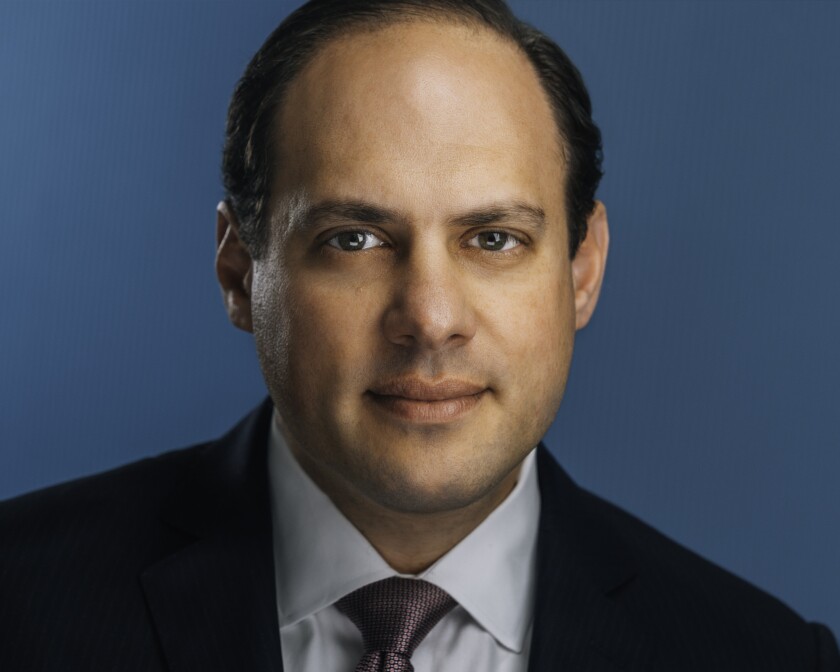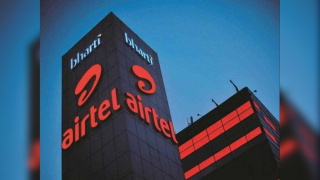Intelsat’s US$400 million acquisition of Gogo Commercial Aviation brought together one of the world’s largest satellite operators with a leading provider of inflight broadband, thrusting Intelsat into several new markets and expanding its reach beyond satellite.
As part of the deal, industry veteran Jon Cobin – who had been with Gogo Commercial Aviation for 11 years, most recently as its chief commercial officer – moved to Intelsat to become its chief strategy officer.
While such a transition may have been daunting to some, particularly during the height of the pandemic, Cobin says it was a natural fit: “Like puzzle pieces,” he says.
“The capabilities of the commercial aviation team and the Intelsat team fit together, and the culture fits very well,” Cobin says, “which is important when you’re bringing together two organisations and going after such a big and important vision.”
Re-emergence
After settling into his new role as chief strategy officer for Intelsat, Cobin states that the main aims for the business revolve around executing its main strategy.
This, he says, involves “re-emerging” from its restructuring that is underway following the announcement in 2020 that it would go into Chapter 11 protection under US bankruptcy laws.
The satellite operator, which dates back more than 60 years, has emerged from that situation with its debt cut from $16 billion to $7 billion, and $6.7 billion in new finance.
There have been a few changes, as long-time chief executive Stephen Spengler retired upon Intelsat’s re-emergence after more than 18 years with the company. He was replaced by David Wajsgras, who took on the role on 4 April.
“The re-emergence is an extremely important event,” Cobin says, adding that it will “set the table” for the company which will have the flexibility and financial resources that create a stronger balance sheet for undertaking investments with customers.
“In order to drive profitability and growth, we will continually expand the value we offer to customers,” he adds.
Those customers are spread across four different segments – networks, media, government and mobility – and Cobin believes the company can leverage its “strong core” offerings to serve its customers, ensuring it delivers operational excellence and quality while also attracting partners into its ecosystem.
Intelsat’s network strategy is to develop what it calls “next-generation software” to unify its architecture and network. The aim of this is to improve user experience through a multiband, multi-orbit network containing both geostationary (GEO) and non-geostationary (NGSO) satellites.
Cobin describes it as “a software-defined network based on 5G everywhere, from the core to the edge and the satellite in between”.
Additionally, he believes that 5G presents the perfect opportunity for satellite to reintegrate itself with the global telecommunications ecosystem, given the benefits of 5G in supporting 3GPP access technologies.
Late last year, Intelsat worked with one of the Fraunhofer Institutes and Research Units in Germany, and Kymeta, a US antenna specialist, to demonstrate how 5G can be used over satellite services.
The companies said that the demonstration was a step towards “hybrid connectivity across satellite and ground cellular networks”, while Cobin says “it’s an important milestone, an exciting one and the first of its kind in a mobility environment demonstrating a native 5G waveform over a satellite link.”
He adds that it is an important step in showing the feasibility of evolving to a unified network architecture.
“If you think about the multi-trilliondollar telecoms ecosystem and the research and development that goes into the technologies that are employed there, we’re getting back on that curve with that ecosystem around us,” he says.
“From a performance of cost in a future roadmap perspective, you simply need to look at the way telecoms has evolved over the past several decades to see that there’s a lot of important trend lines there.”
Demonstrating that 5G can be used from space is an exciting milestone for the company, he says.
Opportunity
Cobin believes that Intelsat is stronger than ever, in an industry he describes as “ever-evolving”.
With the addition of more players, the satellite industry presents opportunities for it to offer more to the global telecommunications ecosystem through varying partnerships, he says.
But he believes his industry has grown apart from telecoms in recent times, becoming “too bespoke, fragmented” with “no standards, no interoperability”.
“We’re very proud of what satellite communications has done, but there’s so much further we can go and so much more value we can bring to people and institutions all over the world,” he says.
Naturally, to realise the potential that satellite can offer, Cobin sees valuable partnerships with telecoms operators as the future of the industry.
Intelsat’s approach is therefore to attract like-minded partners into its ecosystem with the goal of unifying its networks to deliver “a more seamless experience for users at a greater scale”.
Given Intelsat’s history, he is confident that it can forge those partnerships and replicate the growth seen in telecoms over the past decades.
Part of this process will involve consolidation in the wider satellite market, a process Cobin sees as being “both healthy and inevitable”.
Intelsat has participated in this by acquiring Gogo, but it is Viasat’s planned $7.3 billion takeover of Inmarsat – perhaps the biggest such development in recent times – that could encourage more satellite players to come together. That is if the companies’ promises that the deal will lead to “improved services” hold true.
We’re very proud of what satellite communications has done, but there’s so much further we can go and so much more value we can bring to people and institutions all over the world
GEO and non-GEO
For today, Intelsat’s focus remains on both the GEO and NGSO layers within its network.
“We firmly believe that there are important trade-offs. So when you go to add an NGSO, you’re adding some coverage, you’re adding some lower latency services, but you’re trading off some things in terms of the cost and capacity density that you can achieve,” Cobin says.
He adds that the new technology is best employed when there is a profitable, experienced operator with scale, customer relationships, revenue and partnerships.
Intelsat has around 12 GEO satellites in production, which Cobin says is a “massive amount of investment” which will give Intelsat’s network “unprecedented” capability and performance for the growth of the business.
Some might question the relevance of GEO satellites have today, but Cobin notes this technology is seeing significant innovations, using Intelsat’s softwaredefined satellites as an example.
“In one of our leading orbital slots, we’ve got the most orbital slots and premier orbital slots for serving the key areas of the world,” he says.
“Putting a next-generation software-defined satellite in one of those slots provides the best performance, the greatest capacity density, the lowest cost and the highest amount of bandwidth available. So, it is really the backbone of the network.”
The beauty of this type of satellite is that it focuses on capacity and coverage, and can be used in a mobility space, such as aircraft and maritime vessels, and government markets.
He adds that while they are a large-scale investment, they are efficient in terms of capacity-per-dollar.
In an age where the internet is everchanging, satellite firms must continually densify and add to their networks, just like cellular providers do, Cobin says.
He goes on to say this means it is critical Intelsat keeps up with the astronomical rise in demand, as global coverage and deep capacity density is needed in places that have flight routes, and hub cities with large airports or ports for shipping.
“If you’re spreading your capacity out, you’re wasting it because it’s going out to the places where you don’t need it,” Cobin explains.
“You don’t have enough in the places where the demand is the highest, and you really need to be matching supply and demand just like any business.”
He argues that GEO software-defined satellites are key to enabling this. Intelsat recently worked with OneWeb to demonstrate a multi-orbit communications solution for representatives of the US Army and the US Department of Defense.
This partnership showcased the transport diversification between GEO and low Earth orbit (LEO) constellations, with seamless switching between the two, highlighting the potential of using both types of satellites in conjunction with one another.
Cobin believes that while Intelsat will have GEO and NSGO layers within the network, it can layer in capabilities using alternatives to expand the value it can bring to customers.
Also, Intelsat has filed with US regulators, including the Federal Communications Commission, to provide services using medium Earth orbit (MEO) satellites.
Orbiting at altitudes between 2,000km and 35,800km, these may offer more potential for the firm than LEO constellations, given Starlink and OneWeb are now competitors in that market.
Cobin says Intelsat will continue evaluating the potential for MEO satellites, but he can see partners emerging as user experience needs are constantly growing.
In the last few years, Intelsat has faced struggles, but it has come out of them with an array of options to offer customers and plans to expand its services further.






